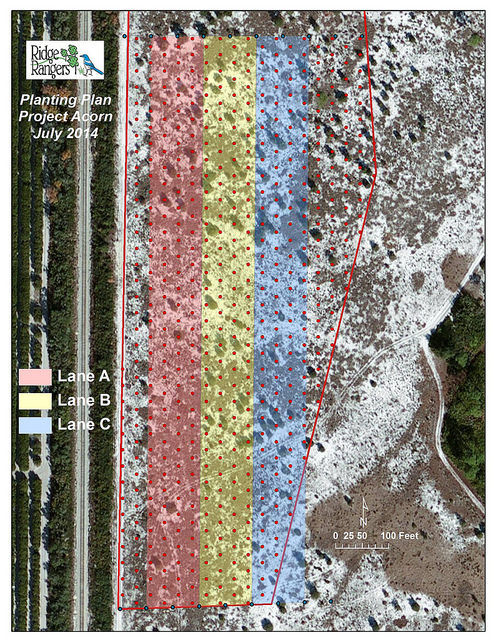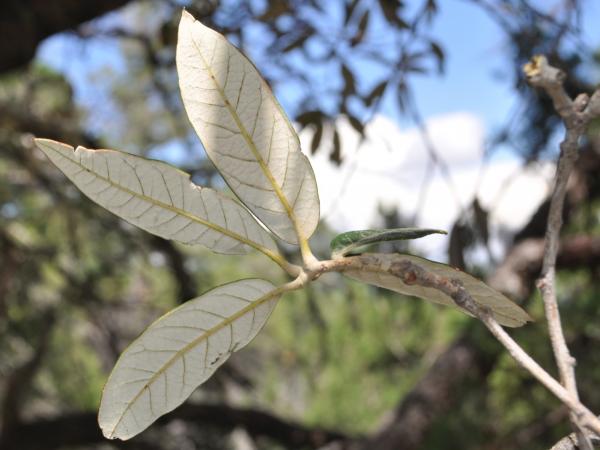Editor's Picks
Plant Focus
Project Acorn - Putting Florida Scrub Oaks Back Where They Belong
Damaged scrub oak habitat in central Florida is being restored—one acorn at a time. Project Acorn, a multiyear effort that combines the initiative of the Florida Fish and Wildlife Conservation Commission (FWC), financial backing from the Disney Worldwide Conservation Fund and the work of local volunteers, aims at healing impaired environment on the Lake Wales Ridge Wildlife and Environment Area in Florida by planting the native oaks that have gone missing from the scrub oak habitat.

Under the leadership of Bill Parken and Nicole Ranalli of FWC, volunteers are involved in the three tasks required for the project: collecting acorns in fall, potting them, and then planting them out in summer. Work began in 2013, when 800 scrub oak sprouts were planted, then in the summer of 2014 volunteers planted 2,400 sprouts, and this year the project has 2,500 sprouts ready for planting. An estimated 700 to 800 people have contributed to the project: collecting, storing and potting acorns, then maintaining the germinated seedlings and finally planting the sprouts and watering them. Most of the work is being done by the volunteer group Ridge Rangers, an organization of volunteers helping to restore wildlife habitat on the Lake Wales Ridge and nearby areas in central Florida.


The scrub oak species involved include sand live oak (Quercus geminata), Chapman’s oak (Quercus chapmanii) and myrtle oak (Quercus myrtifolia). The oak trees will benefit the gopher tortoise (Gopherus polyphemus) and the Florida scrub jay (Aphelocoma coerulescens). It is also hoped that the fire-resistant oaks will crowd out the torpedo grass (Panicum repens) and the Natal grass (Melinis repens), which are not native to the habitat and compete with the oaks for moisture and soil nutrients. In order to help the seedlings become established, project leaders have been mixing potting soil with mycorrhizal material gathered from under the leaf litter below mature scrub oaks.

Oaks have already been planted over 12 acres of damaged scrub habitat, and the goal is to complete restoration over a total of 20 acres. Bill and Nicole are preparing the 2015 planting campaign, which will take place from June through August, and funds are being raised to provide volunteers with a hydration drink, energy bar and a water bottle (state laws and regulations don’t permit these purchases, which can only be bought with private funds). You can view their fundraising campaign here.


Browse the following links for more information on Project Acorn:
Article in Florida Wildlife Magazine
Ridge Rangers (volunteer organization)
Photo Album on Flickr












